 April 7, 2006: Caught in the act. Wouldn't you know it, just as I am enjoying some namazaké, I end up in a Japanese tabloid "Shukan NY Seikatsu" (Weekly NY Lifestyle.) How did I get to this point? Well...
April 7, 2006: Caught in the act. Wouldn't you know it, just as I am enjoying some namazaké, I end up in a Japanese tabloid "Shukan NY Seikatsu" (Weekly NY Lifestyle.) How did I get to this point? Well...At the Taiheizan tasting at Matsuri, Yamazaki-san was gracious enough to invite me to sampling of namazaké from the portfolio of Japan Prestige Saké Association held at Nippon Club.
Of course, nothing says springtime more than the first release of seasonal unpasteurized namazaké. These sakés feel more vibrant and fresh compared to the regular seishu, and for a good reason: they are first release of the year after harvesting the previous autumn, and active yeast provides effervescence, and many of them are made in the form of cask-strength genshu style.
At this event, the following namazaké were being served: Dewa No Yuki Tokubetsu Junmai Namazaké (Yamagata), Gokyo "Arabashiri" Nama Genshu (Yamaguchi), Harushika "Shiboribana" Junmai Ginjo Namazaké (Nara), Kaika "Shiboritate" Tokubetsu Junmai Muroka Unfiltered Nama Genshu (Tochigi), Kamikokoro "Toukagen" Tokubetsu Junmai Nama Genshu (Okayama), Koshi No Homare Nama Genshu (Niigata) , Masumi Arabshiri Nama Genshu, Otokoyama Yukishibore Tokubetsu Junmai Kasumi-shu (Nagano), and Shutendouji "Oo-oni" Tokubetsu Ginjo Nama Genshu (Kyoto).
There were some notable obeservations from this event:
* Kamikokoro "Toukagen," using yeast from peach, had a drastically different feel than 2005 version, indicating that vintage does indeed matter in the world of saké. In 2005, Toukagen was mildly fruity and earthy with a clean and dry finish (SMV: +5), while 2006 was juicy fruit, no earthiness, and shockingly sweet (SMV: -11).
* Otokoyama and their seasonal release has one thing in common: they all have light presence of moromi (lees), which serve to provide extra oomph to the flavor. Most other brewers opt for undiluted apporach instead.
* Naturally, a saké that is not available in the U.S. tend to leave a lasting impression, and such was the case with Shutendouji "Oo-oni." The "Big Demon" was rich and fruity with a sharp and long, dry finish (SMV: +4, Acidity: 1.8).
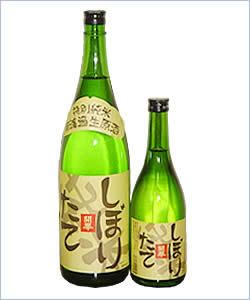 Of all those, three really stood out for me. The first was Kaika (right, SMV: +1~+2, Acidity: 1.5, Rice: Gohyakumangoku, Seimaibuai: 59%, Yeast: N/A) with its fruity and juicy approach. I've always been a fan of their "Kaze No Ichirin" Junmai Ginjo, so I had high hopes and this did not disappoint.
Of all those, three really stood out for me. The first was Kaika (right, SMV: +1~+2, Acidity: 1.5, Rice: Gohyakumangoku, Seimaibuai: 59%, Yeast: N/A) with its fruity and juicy approach. I've always been a fan of their "Kaze No Ichirin" Junmai Ginjo, so I had high hopes and this did not disappoint.There was another saké that I looked forward to trying, as I enjoy their other selection. That saké was Masumi Arabashiri (SMV: -1, Acidity: 1.8, Rice: 80% Miyamanishiki 20% Hitogokochi, Seimaibuai: 55%, Yeast: Assoc #7). Although the aroma was subtle, the flavor was expressive Japanese pear complemented by notes of cocoa. While the SMV shows -1, the firm finish of the Genshu makes it seem drier.
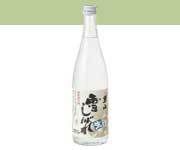
The aforementioned Otokoyama Yukishibore (left, SMV: +4, Aciditiy: 1.4, Rice: N/A, Seimaibuai: 55%, Yeast: N/A) was the most complex of the sakés. The flavor was a expressive and balanced notes of yogurt and white grapes, with a pleasantly dry finish.
********************************************************
April 13, 2006:
I attended a Saké & Beer Expo sponsored by a large saké importer, JFC Int'l. There were over 120 selections covering saké, shochu, and beer. I tried most of the saké and shochu on the list, but in the best interest of self-preservation, had to forgo beer.
 Since the selections were far too many list, here are some awards:
Since the selections were far too many list, here are some awards:Gold Medal: The top of the show goes to Daishichi Brewery's Kimoto Junmai Daiginjo, "Minowamon" (SMV: N/A, Acidity: N/A, Rice: Yamadanishiki, Seimaibuai: N/A, Yeast: N/A). Using a combination of the unique Super-flat Polishing Method and labor intensive Kimoto method, Daishichi Brewery produces a very fruity yet balanced Junmai Daiginjo. With a full mouthfeel and balance of fruitiness along with presence of amami and complemented by clean and dry finish, this saké has got it all.
Silver Medal: Chiyomusubi "Tobingakoi" Daiginjo (SMV: +6, Acidity: 1.2, Rice: N/A, Seimaibuai: 35%, Yeast: N/A) from Tottori Prefecture. This is made in a Shizuku (free-run) style, and adding the brewer's alcohol plays a significant part in its flavor profile. While Shizuku style tends to be soft and mild, this one is one of the most expressive saké on the market. It's almost like a fruit cocktail in a bottle, yet balanced and dry.
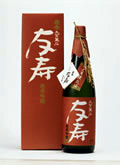 Bronze Medal: goes to Aiyu Shuzo's (Japanese only site) Tomoju Junmai Ginjo (SMV: +2, Acidity 1.5, Rice: Gohyakumangoku, Seimaibuai: 50%, Yeast: N/A) from Ibaraki Prefecture. This saké showcases Gohyakumangoku rice well, showcasing the fruity flavors of tropical fruits balanced by hints of chocolate on the finish. This medium-bodied Junmai Ginjo is easy drinking, and just plain delicious.
Bronze Medal: goes to Aiyu Shuzo's (Japanese only site) Tomoju Junmai Ginjo (SMV: +2, Acidity 1.5, Rice: Gohyakumangoku, Seimaibuai: 50%, Yeast: N/A) from Ibaraki Prefecture. This saké showcases Gohyakumangoku rice well, showcasing the fruity flavors of tropical fruits balanced by hints of chocolate on the finish. This medium-bodied Junmai Ginjo is easy drinking, and just plain delicious.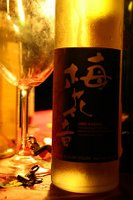 Eye-opener of the night: One of the benefits of attending events where 120+ beverages are served is that you are bound to come across something totally unexpected, and such was the case with the real Umeshu, a.k.a. Plum Saké. Ume Kanon (no data available), while similar in flavor to plum wines, is lighter in body and very complex. The nose of soft dried raisin and Japanese ume plum leads to a very gentle approach, flavors of ume, raisin, and lychee, packaged in a very well acidity with a balanced sweet and tart finish. Once you try Plum Saké, there is no going back to Plum Wines, that's for sure!
Eye-opener of the night: One of the benefits of attending events where 120+ beverages are served is that you are bound to come across something totally unexpected, and such was the case with the real Umeshu, a.k.a. Plum Saké. Ume Kanon (no data available), while similar in flavor to plum wines, is lighter in body and very complex. The nose of soft dried raisin and Japanese ume plum leads to a very gentle approach, flavors of ume, raisin, and lychee, packaged in a very well acidity with a balanced sweet and tart finish. Once you try Plum Saké, there is no going back to Plum Wines, that's for sure!********************************************************
April 27, 2006:
This tasting featuring 5 brewers at Saké Hana as a very special event, as it turned out. Aside from getting to tasting several of the finest sakés, I got to meet two people I consider to be Saké Buddies (Henceforth, an official title in this blog.)
The event featured 5 breweries, mostly from central to southern Japan. The brewers were: Asahi Shuzo (Dassai) from Yamaguchi, Bonki from Kyoto, Fukucho Brewery (Biho) of Hiroshima, Gassan Shuzo from Shimane, and Tenzan Shuzo of Saga.
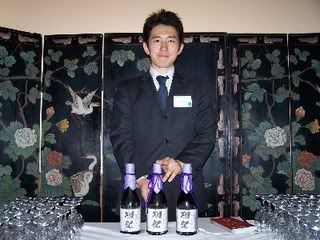 The first saké I sought out was the legendary Dassai "Migaki Niwari Sanbu" ("Polished to 23%", henceforth "Dassai 23"), which as the name imply, is the most refined saké available in the U.S. I head straight to the Dassai 23, and introduce myself to the young gentleman pouring the saké. The young gentleman turned out to be Mr. Kazuhiro Sakurai,the Vice President and 4th generation brewer of the Asahi Shuzo.
The first saké I sought out was the legendary Dassai "Migaki Niwari Sanbu" ("Polished to 23%", henceforth "Dassai 23"), which as the name imply, is the most refined saké available in the U.S. I head straight to the Dassai 23, and introduce myself to the young gentleman pouring the saké. The young gentleman turned out to be Mr. Kazuhiro Sakurai,the Vice President and 4th generation brewer of the Asahi Shuzo.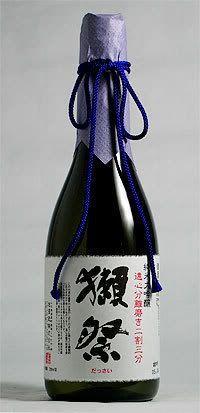 Dassai 23 (SMV: +4, Acidity: 1.1, Rice: Yamadanishiki, Seimaibuai: 23%, Yeast: N/A) is one of those special saké that seem to please everyone. Expressive yet gentle, the fruity elixir posseses enough character and fruitiness to appeal to the novices, while showcasing the elegance, complexity, and pleasingly dry finish to impress the connoiseurs. For those of you who have yet to try this, definitely put this on your life's "to do" list!
Dassai 23 (SMV: +4, Acidity: 1.1, Rice: Yamadanishiki, Seimaibuai: 23%, Yeast: N/A) is one of those special saké that seem to please everyone. Expressive yet gentle, the fruity elixir posseses enough character and fruitiness to appeal to the novices, while showcasing the elegance, complexity, and pleasingly dry finish to impress the connoiseurs. For those of you who have yet to try this, definitely put this on your life's "to do" list!Sakurai-san then poured me their "50" Junmai Ginjo (SMV: +5, Acidity: 1.3, Rice: Yamadanishiki, Seimaibuai: 50%, Yeast: N/A). Time for a confession. Before I tried Dassai 23, I was thinking that maybe I shouldn't start with the 23 first, since everything else is all downhill. But on the other hand, I figured that it is best to taste 23 on the virgin palate, to maximize its impact. Naturally, I chose the latter.
As I braced for my first taste of the 50, I couldn't ignore my dilemma. "Sure, Dassai 50 is technically a Junmai Daiginjo by other brewery's standards, but it's not 23!" my so called logic chimed in. But guess what, it's fantastic!
While 23 featured balanced gentleness, fruitiness, and dryness, 50 was harmony of cleaness, fruitiness, and dryness. While the initial taste was daiginjo-like fruitiness, there was a harmonizing notes of grain that lead effortlessly to a ginjo-like cleaner and drier finish. And for about 1/3 the cost of 23, this is a tremendous bargain.
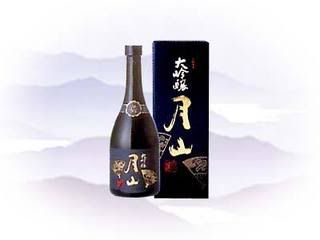 The next ones I tried were from Yoshida Shuzo, maker of Gassan labels . I have tried their sakés in the past, but that was well before I started taking extensive tasting notes, so without much recollection, it was like trying them again for the first time! Of the four I tried, I liked their "Tobira" Daiginjo (SMV: +5, Acidity: N/A, Rice: Yamadanishiki, Seimaibuiai: 35%, Yeast: N/A), made in the shizuku method. Shizuku method of gravity-aided free-run pressing produces a saké with rich yet gentle body and expression. This particular Daiginjo had a doughy nose followed by balance of fruitiness and mild spiciness leading to a dry finish. This saké oozes of "special occasion" designation for sure.
The next ones I tried were from Yoshida Shuzo, maker of Gassan labels . I have tried their sakés in the past, but that was well before I started taking extensive tasting notes, so without much recollection, it was like trying them again for the first time! Of the four I tried, I liked their "Tobira" Daiginjo (SMV: +5, Acidity: N/A, Rice: Yamadanishiki, Seimaibuiai: 35%, Yeast: N/A), made in the shizuku method. Shizuku method of gravity-aided free-run pressing produces a saké with rich yet gentle body and expression. This particular Daiginjo had a doughy nose followed by balance of fruitiness and mild spiciness leading to a dry finish. This saké oozes of "special occasion" designation for sure.Somewhere along the way, I met Tim Sullivan of Urbansake.com, a website detailing Tim's journey into the world of saké. Little did I know at the time that our paths would cross often, and that he would eventually be one of the guiding force in my establishing this blog! I am sure you will see Tim's name mentioned here often.
Back to the topic at hand. The next two sakés were dessert style "Bonki" and sparkling Japon by Tanzan Brewery. Incidentally, both sakés possess similar data: (SMV: -60, Acidity: 5.8, Rice: Gohyakumangoku, Seimaibuai: 65%, Yeast: N/A). Bonki was kind of like light ume-shu, and high acidity makes it feel much drier than the SMV -60. Japon reminds me a bit of Italian dessert wine Moscato d'Asti, lightly sparkling with mild fruitiness.
 Down the bar at Saké Hana was a Master Brewer Miho Imada from Fukucho Brewery in Hiroshima. Make that Ms. Miho Imada, a female Toji! Their Junmai Ginjo "Biho" (SMV: N/A, Acidity: N/A, Rice: Yamadanishiki Blend, Seimaibuai: 58%, Yeast: N/A) is actually named in her honor, where alternate pronunciation of kanji for "Miho" yields "Biho."
Down the bar at Saké Hana was a Master Brewer Miho Imada from Fukucho Brewery in Hiroshima. Make that Ms. Miho Imada, a female Toji! Their Junmai Ginjo "Biho" (SMV: N/A, Acidity: N/A, Rice: Yamadanishiki Blend, Seimaibuai: 58%, Yeast: N/A) is actually named in her honor, where alternate pronunciation of kanji for "Miho" yields "Biho."I've had Hiroshima sakés before, and they were known for their earthy, and sometimes funky style (think Suishin and Kamoizumi Shusen). This one was very different from any of the Hiroshima saké I've had, with its fruity flavors of lychee and pineapples. While the approach was soft and gentle, the finish was sharp and clean. This was very good.
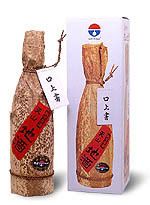
All the way at the end was Tenzan Brewery. If the name doesn't ring a bell, the bamboo-leaf wrapped bottle of Jizake Tenzan Genshu sure should be a familiar sight! The Jizake Tenzan (SMV: +2, Acidity: 2.2, Rice: Saikai #134, Seimaibuai: 60%, Yeast: Assoc. #9) is a Genshu made using local rice, and has a nose of creamy grain and fruits. The flavor is an earthy and robust blend of steamed rice and dried fruits, and the finish is decidedly Genshu, firm and dry.
The last on the list was Japan-only Tenzan "Hotarugawa" Junmai Daiginjo Namazaké (SMV: 4, Acidity: 1.4, Rice: Yamadanishiki, Seimaibuai: 45%, Yeast: Assoc. #9). This was a very refreshing style, fruity melons with good depth and a lasting finish.
While that signals the end of the sampling portion of the evening, it also marked the start of evening long evaluation of the merits of both Dassai 23 and Dassai 50 with my newly found Saké Buddies...

No comments:
Post a Comment